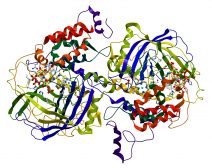Table of Contents
Mite Definition
What is mite? A mite is a minute arachnid, typically measuring less than 1 mm in length. It belongs to the class Arachnida and the subclass Acari. The arachnids are known for having jointed limbs and chitinous exoskeletons. Its subclass, Acari, consists of the mites and ticks. Mites are characterized by having a body plan organized into two tagmata: (1) prosoma and (2) opisthosoma. The anterior body region is called the capitulum and the remainder of the mite’s body is referred to as idiosoma.
The term mite came from the Old English mīte (“mite”), meaning “tiny insect”. Mites are not insects. Nevertheless, they belong to the same phylum, Arthropoda. In particular, mites belong to another group of arthropods, the arachnids. The scientific study of mites and ticks is called acarology.
Anatomy
External and internal structures
The mite’s body generally consists of two tagmata: (1) prosoma (cephalothorax) and (2) opisthosoma (abdomen). The prosoma is a tagma comprising the head and the thorax fused together. The opisthosoma refers to the tagma posterior to the prosoma. In mites, these two tagmata are fused and the indication of the segment location is implicated by the positioning of the limbs. The cirumcapitular furrow separates the chelicerae and the pedipalps form the rest of the body.
The anterior body region is called the capitulum and the remainder of the mite’s body is referred to as idiosoma. The capitulum (also called gnathosoma) is a retractable feeding organ consisting of the chelicerae, the pedipalps, and the oral cavity. Most adult mites have four pairs of limbs, each with six segments. The ventral portion between the fourth pair of limbs is a genital opening called the gonophore. Mites have a typical arachnid digestive system although some species do not have an anus. They lack a heart. Their circulating fluid is driven by the contraction of body muscles. They breathe through tracheae, stigmata, intestines, and the skin. Their excretory system consists of nephridium and Malpighian tubules. (Ref. 1) The eyes vary among species. While some mite species are blind, others have one to five lateral eyes. Bristles (called setae) are present on the body and limbs.

Reproduction
Mites reproduce sexually. The male deposits a spermatophore and the female picks it up. The male may also use his chelicerae to insert his spermatophore into the female’s gonophore. (Ref. 1)
Life stages
The life stages of mites are as follows: egg stage » larval stage » nymph stage » adult stage. The egg hatches releasing the larva with six legs. After three molts, the larva turns into a nymph with eight legs. After another three molts, it develops into an adult.
Ecology
Some mites are free-living, feeding on dead or living organic matter. Dust mites, for example, feed on the dead skin shed by humans. Many are parasitic. Examples of parasitic mites are Varroa destructor and Acarapis woodi that parasitize honey bees. The habitats of mites vary. They include freshwater, marine water, soil, and plants.
Mite Significance
Medical significance
Certain mite species are associated with some important medical conditions in humans. For example, Sarcoptes scabiei is a parasitic mite that causes scabies in humans.
In beekeeping
As mentioned earlier, some mite species are parasites of honey bees. A heavy infestation could lead to the death of the bee colony.
References
- Ruppert, E. E., Fox, R. S., & Barnes, R. D. (2004). Invertebrate Zoology, 7th edition. Cengage Learning. pp. 590–595.
©BiologyOnline. Content provided and moderated by BiologyOnline Editors.







